In 2012 I was hired by the Johnson City Police Department as director of an $800,000 grant-funded Targeted Community Crime Reduction Project to reduce drug-related and violent crime in two Johnson City, TN, neighborhoods historically known for highest rates of these crimes. This project required a collaborative problem-solving approach where I engaged community partners to assist in recognizing the causes of crime.
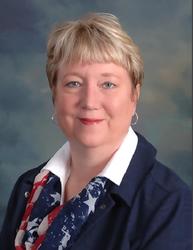
Together, we implemented evidence-based practices to reduce crime. The program quickly accelerated. Within the first year, we had 33 agencies implementing 19 programs that addressed crime prevention, neighborhood revitalization, increased policing, and offender treatment, all with the goal of crime reduction. In 2014, our project received recognition from the National Criminal Justice Association as the “Outstanding Criminal Justice Program of the Year” for the Southern Region and went on to be named by the U.S. Department of Justice as a “success story.”
One program, the Day Reporting Center (DRC), was developed under this grant as our offender intervention to reduce recidivism. The DRC accepts Washington County Criminal Court referrals of high risk, high need, felony offenders with addictions who are likely to commit new crimes or violate probation and return to jail. Over the three years I oversaw the DRC development, I learned so much about these people and the vast amount of trauma experienced in their lives. Unfortunately, a vast majority of those suffering from addiction also may have criminal offenses and most have been traumatized as children.
In addition to the increase in drug addiction in recent years, our city and county have experienced a high rate of domestic violence. In 2015, 3,332 domestic violence calls to 911 were reported, a daily average of nine domestic violence calls that required response by Washington County emergency responders. In Washington County, 59.7% of all aggravated and simple assaults were domestic violence. Since 2013, 43% of murders were domestic violence. In this situation, statistics can hide the grim truth that people lost their lives at the hands of someone they knew and may have loved. In 2015, 100% of homicides in our county were acts of domestic violence.
Along with a domestic violence crisis, residents in Northeast Tennessee suffer disproportionately from the effects of substance abuse and as well as criminal behavior, child abuse, and neglect. Tennessee is second in the nation in opioid prescriptions per person. Not surprisingly, we also have the top three buprenorphine providers in the nation. Tennessee ranked 45th out of 50 states in 2016 for overall health outcomes, and 47th for violent crime (http://www.americashealthrankings.org/). Northeast Tennessee’s health data is significantly worse than other regions of the state. For example, neonatal abstinence syndrome (NAS) affects more babies born in Northeast Tennessee than other regions of Tennessee, with approximately 45 per 1,000 babies and 15 per 1,000, respectively. In its entirety, Tennessee’s rates for babies born with NAS are much higher than the rest of the nation. These health issues emphasize the need for systems to collaborate to increase prevention efforts and treatment interventions for citizens of Northeast Tennessee.
During my lengthy career in crisis intervention programs such as faith-based, intensive outpatient drug recovery, juvenile courts in two counties, and now the Day Reporting Center crime reduction project at the Johnson City Police Department, I have often heard stories I’ll never forget. The majority of these stories come from teens or adults with traumatic childhood events that are now a part of their stories. Hearing from someone battling addiction to involvement with the criminal justice system, I found myself showing empathy to these individuals before I realized how important empathy was to a trauma survivor in validating his/her story. To me, it seems so unfair that someone experienced a childhood where her parent introduced drugs to someone in his early teens, a relative raped him on a regular basis beginning at the age of 7, or someone was forced to live in a violent home where at 10 years old she had to step in front of a drunk enraged father pointing a shotgun at her mother. I reasoned that no one picks the family they are born into. In reality, I could have been born into that type of family and they could have been born into mine.
In 2014, the chief of my police department tasked me with applying for grant funding to establish a Johnson City/Washington County Family Justice Center. In the course of writing the grant I visited the Knoxville Family Justice Center. There I first encountered education on trauma-informed care and ACEs science.
Following that first experience, I attended the International Family Justice Center Conference in San Diego, California in April 2015. Dr. Vincent Felitti spoke on the Adverse Childhood Experiences (ACE) Study and his landmark experiences at Kaiser Permanente. Coming from a community where opioid addiction is a major concern, I was amazed to hear how a male’s ACE score of 6 increased his chances of becoming an IV drug user by 4,600% over someone with an ACE score of 0.
After learning more, there was no way I could not include education about possible effects of childhood trauma into our arsenal against Northeast Tennessee’s opioid epidemic. I attended the National Treatment Accountability for Safer Communities (TASC) Conference in St. Petersburg, Florida in May 2015 where Dr. Joan Gillece, director of SAMHSA’s National Center for Trauma Informed Care (NCTIC), spoke on trauma-informed care. At that point, I was convinced I had found the message of healing my community that was so urgently needed. Afterwards, I introduced myself to Dr. Gillece and explained my role in the community. She gave me her card and told me to be in touch.
As soon as I returned to Northeast Tennessee, I researched trauma-informed care and ACEs science and what these looked like within various systems and organizations. I discovered Aces Too High and ACEs Connection, which continue to be tremendous resources for my work. Articles there led me to learn about the “Peace for Tarpon Springs” movement. I read of what I envisioned for my own area. It was not only possible, but being achieved by an inspiring group in Tarpon Springs, Florida.
The road did not stop here. I decided to present my findings and vision to a group of faculty members at East Tennessee State University (ETSU) to see if someone would partner with me in this community education endeavor. I asked Dr. Andi Clements, a longtime friend and psychology professor at ETSU, if she would come to this meeting as support. A few days following my presentation, Dr. Clements emailed me that she wanted to be the one to partner with me in educating our community in trauma-informed care and ACEs science. In August 2015, I contacted Dr. Gillece to ask if we could talk to strategize a game plan to educate our community. In October 2015, Dr. Gillece spoke to 383 professionals at ETSU. In January 2016, Dr. Gillece sent SAMHSA’s draft course “Trauma Informed Approach: Key Assumptions and Principles” to Dr. Clements and me and committed to providing one of her team members to train therapists on the TAMAR (Trauma, Addictions, Mental Health and Recovery) model. In April 2016, David Washington came and trained 53 therapists over two days in using the TAMAR program.
I’m not sure how to describe what happened over the next several months, but from April 2016 to January 2017, Dr. Clements and I have trained over 760 other professionals in disciplines such as healthcare, human service agencies, treatment programs, and community service organizations (See the pie chart below).
Twenty-Nine Training Events (1265 People Trained)
Never has anything in my career taken off as rapidly as has the demand for this training. In June 2016, we held our first Trauma Informed System of Care Coalition meeting. Now, the coalition meets bi-monthly at the Johnson City Police Department and has 14 organizations as system partners, some of which include the Niswonger Children’s Hospital, Johnson City Schools, Boys & Girls Club, multiple departments of East Tennessee State University, Contact 211, and the Family Justice Center.
Over these months Dr. Clements and I began looking for grants to apply for with hopes of partnering with one of our system partners to create a trauma -informed/ACEs science pilot program in our community. In the summer of 2016, Dr. Clements responded to a call for funding proposals from the Tennessee Department of Children’s Services, “Building Strong Brains” initiative. That grant was funded at a rate of approximately $120,000 for the first year, renewable up to four additional years.
In this project, Dr. Clements is directing a demonstration project in which she is partnering with the Johnson City/Washington County Boys & Girls Club and I am serving as a training consultant. We have hired a project director who for six years prior was working in the Johnson City Public Schools and had attended one of our trauma-informed care training events. On her own she had begun implementing “calming” activities with the children in her role at the school, so she was a perfect fit for overseeing our pilot program.
A second faculty member in the Department of Psychology, Dr. Diana Morelen, has been instrumental in development of the caregiver training and child assessment portions of this project. Dr. Morelen is a child clinical psychologist with over eight years of experience and training in developing, implementing, and evaluating clinical interventions that serve youth and families. She has specialized training in understanding how ACEs impact development, the impact of trauma on development, and how to integrate understanding of trauma and development to promote trauma informed care (TIC) in a variety of settings and systems.
As a result of being recipients of this funding, Dr. Clements and I had the opportunity to receive two days of training in November 2016 provided by the State of Tennessee’s Department of Children’s Services and the Tennessee Commission on Children and Youth on Tennessee’s ACEs Initiative, Building Strong Brains. Their goal: "All Tennessee children have what they need to thrive by creating a culture shift where more resources are invested early on to prevent the development of diseases, health risk behaviors, mental health issues, and social issues down the line. This change in public investment would produce long term improvements by building healthy, strong future generations of citizens”. (Facilitator’s Guide, Building Strong Brains: Tennessee’s ACEs Initiative, p. 81).
As the message of trauma-informed care and the risk of ACEs has gotten out, our training calendar has filled. To keep up with the demand, we created a train the trainer program. The first six-hour training session occurred in November 2016 with 36 professionals who were trained to teach a composite course of material from the SAMHSA “Trauma Informed Approach: Key Assumptions and Principles,” “Building Strong Brains” initiatives, and content we have found on Aces Too High since 2015. Most of these professionals who were trained in November will now conduct ongoing training within their own organizations as they work to move from a trauma-aware culture to truly becoming trauma informed. We are preparing to offer train the trainer course again in April 2017. We also created guidelines for experienced to apply to be one of our trainers and to date we have four qualified trainers in addition to Dr. Clements and me.
Looking back, I definitely attribute having an existing network of partnerships already developed and functioning as a group around crime prevention to be a contributing factor to the speed in which Northeast Tennessee has embraced this message of healing. As more resources become available and easily accessible through SAMHSA, Aces Too High, ACEs Connection, the National Children’s’ Traumatic Stress Network, and others, I believe we will see the outcome from this message to bring healing to many communities over the next 10-15 years.
We are beginning to witness this education bringing changes to our community. For example, one of the homeless services changed portions of their intake procedures and their signs to be more trauma friendly, one ETSU faculty member is now incorporating trauma-informed care into her curriculum, an emergent care program for children created a calm and more welcoming environment in their office, nurses reported displaying more empathy to drug-addicted mothers coming in for prenatal care, and a local elementary school plans to implement the Handle With Care program in which law enforcement officers notify school personnel if a child in the school was present during a house call regarding a domestic situation.
As a parent and now a grandparent, I can’t ignore people such as U.S. Rep. Diane Black saying, “In Tennessee an entire generation could be lost to the scourge of opioid abuse.” http://www.tennessean.com/stor...ioid-abuse/82646852/. I refused to turn my head and ignore the growing number of children witnessing domestic violence in their homes potentially without a caring adult to help them work through trauma such as this. Though every community has growing homeless and corrections populations, by my understanding the prevalence of trauma and adverse childhood experiences that are present in most of these lives, I can now see them as people and not statistics.
With the message of trauma-informed care and by using ACEs science, we are determined to create a community where children will spend time after school at the Boys & Girls Club and encounter a healing advocate or have a school teacher who understands the impact of trauma, so instead of responding punitively when a child’s behavior changes, they offer some empathy and ask what’s going on.
ACEs are no excuse for a life of crime or drug addiction, but since this science offers an explanation for this behavior, maybe over time people who experience ACEs might experience empathy in the schools they attend, the programs they're involved with, or even in prisons so that they will experience a greater degree of healing and recovery. Those are the kind of responses that will address some of our culture’s greatest needs.



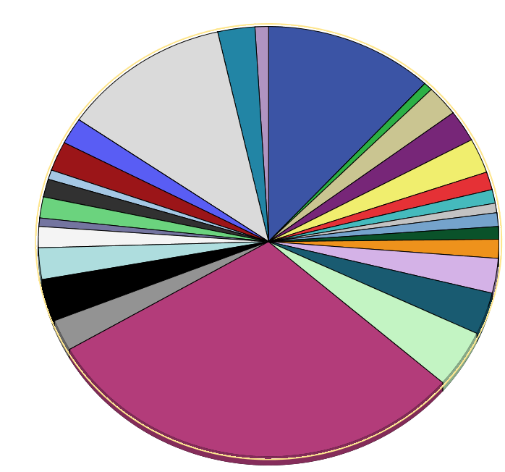
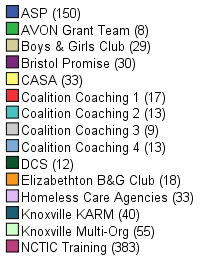
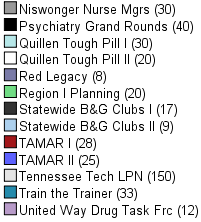

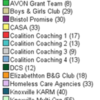
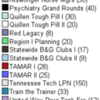

Comments (6)